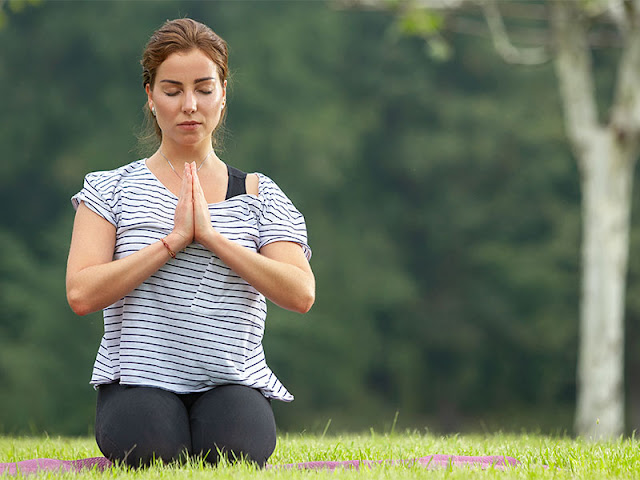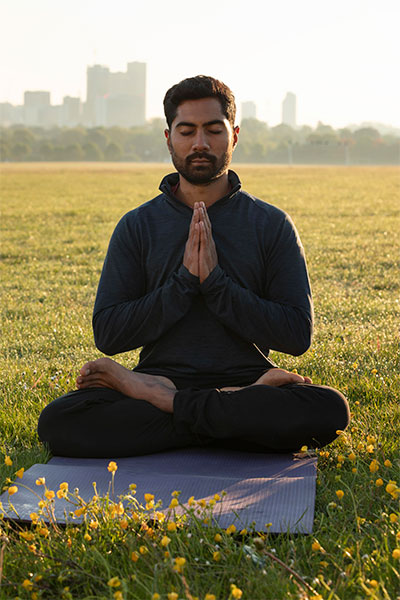In the fast-paced world we live in, finding moments of tranquility has become more crucial than ever. Meditation, an ancient practice with roots in various cultures, has emerged as a powerful tool for achieving inner peace and well-being. Whether you are a seasoned practitioner or a beginner seeking to explore the profound benefits of meditation, this comprehensive guide will provide you with valuable insights and practical tips for practicing meditation to enhance your meditation experience.
Before delving into the tips, it's essential to understand the science behind meditation. Numerous scientific studies have demonstrated the positive impact of meditation on both the mind and body. The benefits are vast, from reducing stress and anxiety to improving focus and cognitive functions. Meditation induces a relaxation response, decreasing the production of stress hormones and promoting a sense of calm. Understanding this foundation is crucial for appreciating the transformative potential of meditation.
2. Setting the Stage: Creating a Sacred Space:
A conducive environment is paramount for a successful meditation practice. Find a quiet and comfortable space where you won't be disturbed. Consider incorporating elements that promote serenity, such as soft lighting, calming colors, and perhaps a cushion or a chair for comfortable seating.
Visit: Activities for Speech Therapy for kids
3. Posture Matters: Finding Your Zen Position:
Maintaining the right posture is fundamental in meditation. Whether sitting on a cushion or a chair, ensure your spine is straight and your body relaxed. The goal is to find a position that is both comfortable and alert, allowing for an uninterrupted flow of energy.
4. The Breath: Your Gateway to the Present:
Focus on your breath – a fundamental aspect of almost all meditation practices. Use the breath as an anchor to bring your attention to the present moment. Notice the inhales and exhales, the rise and fall of your chest or abdomen. The breath serves as a powerful tool to calm the mind and center your awareness.
5. Mindfulness Meditation: Embracing the Present Moment:
Mindfulness meditation is a widely practiced technique that involves cultivating awareness of the present moment. Start by observing your breath and then expand your awareness to sensations, sounds, and thoughts without judgment. Mindfulness meditation enhances your ability to stay present amidst the chaos of daily life. Elevate your charm, and amplify your confidence! Enroll in expert-run personality grooming classes for a radiant and influential you.
6. Guided Meditation: A Journey Within:
For those starting their meditation journey, guided meditation can be immensely beneficial. Follow the soothing voice of a guide, leading you through visualizations and prompts. Guided sessions are excellent for beginners and individuals seeking specific outcomes, such as stress relief or personal growth.
7. Loving-Kindness Meditation (Metta): Cultivating Compassion:
Loving-kindness meditation, also known as Metta, focuses on generating feelings of love and compassion. Begin by directing these feelings towards yourself and gradually extend them to loved ones, acquaintances, and even those with whom you may have challenges. Metta meditation fosters a sense of connection and empathy.
8. Transcendental Meditation (TM): Mantras and Inner Silence:
Transcendental Meditation (TM) involves the silent repetition of a mantra to achieve a state of transcendence. This practice, rooted in ancient Vedic traditions, promotes deep relaxation and a profound sense of inner peace. Learning TM from a certified teacher ensures personalized guidance and maximizes its benefits.
9. Body Scan Meditation: Connecting with Your Physical Self:
Body scan meditation involves systematically directing your attention to different parts of the body. Starting from the toes and moving up to the head, observe and release tension in each area. This practice enhances bodily awareness, promotes relaxation, and can be particularly effective for stress reduction.
Visit: creative thinking skills
10. Zen Meditation (Zazen): Finding Stillness in Motion:
Zazen, a core practice in Zen Buddhism, emphasizes sitting in a specific posture and observing the mind without attachment. The focus is on finding a balance between alertness and relaxation. Zazen cultivates clarity and insight into the nature of the mind, making it an enriching practice for those seeking a deeper understanding of themselves.
11. Movement-Based Meditation: The Dance of Mind and Body:
For individuals who struggle with sitting still, movement-based meditations like Tai Chi or Qigong provide an alternative. These practices combine gentle physical movements with a focus on breath and mindfulness. Movement-based meditation promotes a harmonious connection between the mind and body.
12. Consistency is Key: Cultivating a Habit:
Building a consistent meditation practice is crucial for reaping its long-term benefits. Start with a manageable duration, perhaps 10-15 minutes, and gradually increase as you become more comfortable. Set aside dedicated time each day to nurture your meditation habit.
13. Dealing with Distractions: Embracing the Ebb and Flow:
Distractions are inevitable, especially when beginning your meditation journey. Rather than getting frustrated, acknowledge distractions without judgment and gently guide your focus back to your chosen point of meditation, whether it's the breath, a mantra, or a guided visualization.
14. Mindful Living: Integrating Meditation into Daily Life:
Meditation is not confined to a specific time or place. Embrace the concept of mindful living by bringing meditative awareness into your daily activities. Whether it's walking, eating, or working, practice being fully present and engaged at the moment.
15. Meditation and Stress Reduction: The Calming Ripple Effect:
One of the most significant benefits of meditation is its impact on stress reduction. The practice activates the body's relaxation response, counteracting the physiological effects of stress. Regular meditation can lead to lower cortisol levels, improved emotional well-being, and a heightened ability to navigate challenging situations. Craft a captivating presence with expert-led personality development classes – where first impressions become lasting impressions!
16. The Transformative Power of Self-Reflection: Journaling and Contemplation:
Enhance your meditation practice by incorporating self-reflection. Keep a meditation journal to document your experiences, insights, and any challenges you encounter. This process allows you to track your progress and gain a deeper understanding of your evolving inner landscape.
The Importance of Patience: Nurturing Your Inner Garden:
Meditation is a journey, not a destination. Cultivate patience and approach your practice with an open heart. Some days will be more challenging than others, and that's perfectly normal. The key is to embrace the process and allow the benefits to unfold gradually over time.
Visit: developing emotional intelligence
Conclusion: Tips for Practicing Meditation
In conclusion, mastering the art of meditation is a deeply personal and transformative journey. By incorporating various techniques such as mindfulness meditation, loving-kindness meditation, and transcendental meditation, you can tailor your practice to suit your preferences and goals. Remember to create a conducive environment, maintain proper posture, and use your breath as your anchor to the present moment.
Consistency is key, so start with manageable durations and gradually increase as you build your meditation habit. Embrace the ebb and flow of distractions, integrating meditation into your daily life for a more mindful existence. Whether you choose to explore the stillness of Zazen or the gentle movements of Tai Chi, each technique offers a unique pathway to self-discovery and inner peace.
As you embark on your meditation journey, keep in mind the importance of patience and self-reflection. Journaling your experiences allows you to track your progress and deepen your connection with the practice. Ultimately, the transformative power of meditation lies in its ability to unlock the doors to inner serenity, resilience, and a heightened sense of well-being.
Tips for Practicing Meditation: Your roadmap to a calmer, more centered life begins with these insightful and practical tips for mastering the art of meditation.



Comments
Post a Comment